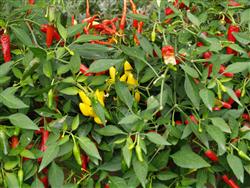
Study edible herbs:
- Learn to cook with herbs
- Learn to identify edible herbs
- Learn how to process and preserve edible herbs
Learn how to identify and successfully grow dozens of common and uncommon edible herbs. Develop your skills and experience the delights of cooking adventurous new recipes with herbs. Learn drying and other methods of preserving the flavour (eg. herb oils, salts, vinegars).
Eight lessons as follows cover common and less common herbs used for cooking.